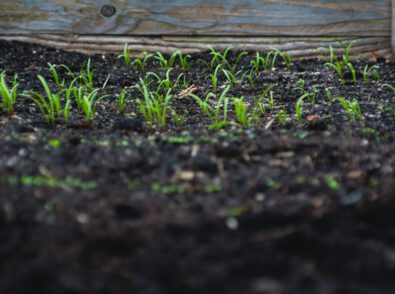Different Types of Industrial Composting
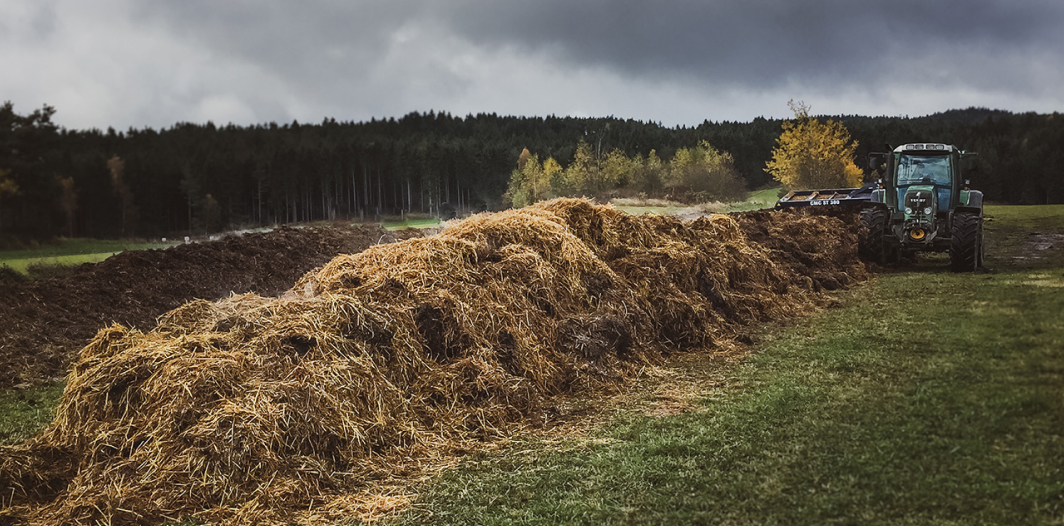
Industrial composting is intended to process high volumes of commercial and industrial organic waste, including municipal waste from household green bins and organic waste from restaurants and other businesses. Industrial composting can also break down compostable plastics and other biodegradable materials. The finished compost is then sold or passed on to nurseries, farms, and greenhouses to nourish the earth.
The benefits of industrial composting facilities can’t be overstated. They divert massive quantities of waste that would otherwise be buried or burned. In the U.S., 167 million tons of garbage are sent to landfills each year, about half of which could have been composted and used for more productive purposes.
Though decomposition happens naturally over time, industrial composting accelerates the process and allows the breakdown of a wider variety of materials, including bioplastics, which typically require higher temperatures to process.
Compost-rich soil produces healthier, more nutrient-rich foods and helps to protect our watersheds, filtering out stormwater pollutants by up to 95%.
More arable land means better food and more of it, helping to reduce food insecurity, a significant concern with so much poverty and hunger in our country today.
Additionally, industrial composting creates jobs and supports a more sustainable, circular economy. It also reduces waste in more ways than you might imagine—fewer trucks are needed to haul it, thereby contributing to a cleaner environment.
What Is Industrial Composting?
Industrial composting companies process a large amount of organic waste to produce compost. This process helps keep biodegradable waste out of landfills and enables composting businesses to turn garden waste and discarded food scraps into a valuable resource.
The compost industry uses the same biological principles as a home compost pile to decompose organic matter. However, it accelerates the process by using various techniques. Industrial composting facilities can process everything a home compost pile can, as well as various other biodegradable items like compostable plastics, grease, and bones.
Waste that the industry processes includes:
- Meat
- Avocado and mango pits
- Chicken bones
- Fish bones
- Cardboard covered in food residues
- Dairy products
- Baked goods
- Animal manure
- Bio-solids
- Raw mussel shells
- Bioplastics
Industrial composting helps mitigate the effects of global warming. Composters help keep organic waste out of landfills, where it is left untreated and starts to break down. As this waste rots, it produces methane, a harmful greenhouse gas.
How Does Industrial Composting Work?
Industrial composting facilities create the optimal environment for compostable materials to decompose. This process includes meticulously controlling the temperature, humidity, and airflow. Some methods also require the frequent rotation of compost to support microorganisms and speed up the breakdown process. Composters rely on the latest technologies to break down large volumes of organic waste much faster, including items like compostable food packaging that require high temperatures to decompose.
Just like curbside trash pickup, many industrial composting companies pick up organic trash directly from their customers or require them to drop off their waste at the facility. Composters will process organic waste and then sell the finished compost to gardeners, farmers, and other end users.
The 6 Types of Industrial Composting
Industrial-scale composting has been growing since the 1980s. Nowadays, the compost industry relies on various methods to treat organic waste. There are six types of industrial composting, each with its advantages and drawbacks. While some facilities rely on one composting method, others integrate various techniques to treat a large spectrum of organic waste.
1. Windrow
Windrow composting, also known as turned windrow composting, is used for large volumes of garden waste, such as leaves, grass clippings, agricultural crop material, and animal manure. Windrows are formed in long piles and exposed to open air, generally in long banks of anywhere from three to eight meters across and one to four meters high, with adequate space between the rows to accommodate compost-turning machinery.
Waste is often combined with wood chips to bulk it up, making it easier for machinery to turn the piles. The compost is turned once every three days or so to aerate the material and stimulate microbial activity.
Composting using the windrow method generally takes eight to 16 weeks during the active cycle, with an additional four to six weeks to cure. The type of materials and pile size dictate the temperature and airflow within the piles. Depending on the turning strategy, it could take up to a year to produce finished compost.
Windrows are aerated primarily by passive airflow. For example, it’s harder to oxygenate a windrow if it is too large or wet. Conversely, smaller piles may not achieve high enough temperatures to kill pathogens and weed seeds as they lose heat more quickly.
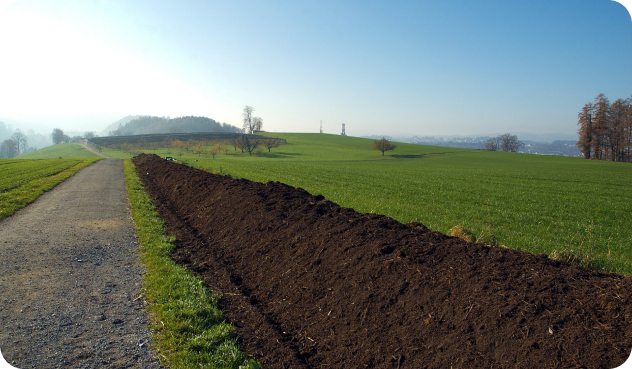
Windrow Composting Pros
- Efficiently process large volumes of waste.
- Product is dryer and easy to handle.
- Requires less investment in equipment compared to other methods.
Windrow Composting Cons
- Large tracts of land are required.
- Requires a rural location and a large buffer zone to protect residential neighborhoods.
- Permits may be required.
- Compost can become anaerobic in wet climates.
- Odor-emitting, especially during the turning process.
- Attracts vermin.
2. Vermicomposting
Vermicomposting relies on earthworms and microorganisms to decompose organic matter and produce a rich, organic soil amendment that contains various plant nutrients and helpful microorganisms. This composting method is common for individuals and smaller organizations. In fact, many households rely on vermicomposting to decompose food scraps and, in return, offer plant-healthy soil that families use in their gardens. Although not common, there are industrial composting sites that rely on vermicomposting.
Vermicomposting decomposes various types of organic matter, including:
- Food preparation residues and leftovers
- Scrap paper
- Agricultural crop residues
- Animal manure
- Yard trimmings
- Organic by-products from industries
Only seven out of 9,000 earthworm species are suitable for vermicomposting. Composters will add the right earthworms to a large bin with holes in it that allow earthworms to breathe. Because earthworms need a lot of water, composters will also add wet bedding—such as newspaper soaked in water—to the bin. Next, they’ll add organic matter like food scraps and cover it with the wet bedding. It takes about four to six months for the matter to decompose.
After this time, composters can harvest earthworm castings—a waste by-product that contains microbes and nutrients and stimulates plant growth.
Vermicomposting Pros
- Organic matter decomposes quickly.
- Matter can decompose indoors or outdoors.
- Minimal odors.
Vermicomposting Cons
- Not easy to scale.
- Not a cost-efficient commercial composting method.
- Can attract fruit flies and vermin.
3. Covered in Vessel
In-vessel composting occurs within a closed container, such as a concrete-lined trench, drum, or silo. Because of its contained environment, it generally does not take up as much space as the windrow method and is easier to control in terms of temperature, airflow, and moisture. The vessel is turned mechanically to aerate the compost inside, and the containers can be virtually any size.
In-vessel industrial composting can accommodate almost any type of organic material, including biosolids, animal waste, and food scraps. Compost is produced in a few weeks as it is processed at a high temperature, but it will take longer to cool and balance the microbial activity.
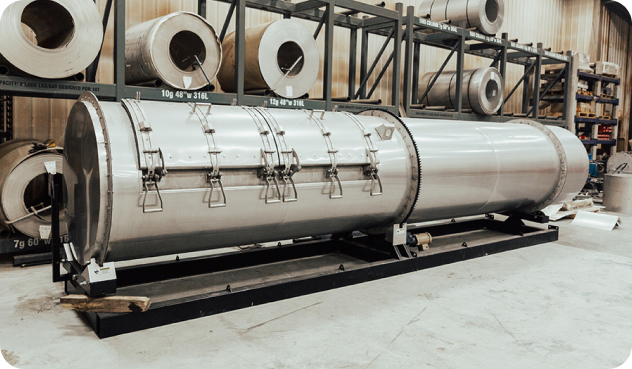
In-Vessel Composting Pros
- Easy to control temperature and moisture.
- Reduced risk of disease from contamination.
- Reliable year-round use.
- Odors are contained.
- Does not take up as much space as windrow composting.
- Shorter timelines: viable compost in as little as a month.
- A wider variety of materials can be composted.
- Does not threaten local groundwater.
In-Vessel Composting Cons
- Requires significant investment in equipment.
- Needs electricity to control temperature and aerate the compost. As energy costs continue to rise, this will undoubtedly result in higher operational costs.
- Because it requires energy, it is not a sustainable composting method.
4. Aerated Static Pile
Aerated static pile composting is a hot composting method that accommodates large quantities of organic waste. Static pile composting works much faster than other methods, producing a viable result in just a few months. However, the types of waste processed using this method are limited. It does not always work well for animal products or grease waste from food processing, although many farms use this method for composting manure.
Like the windrow method, waste material is often mixed with bulking agents to encourage airflow through the pile. However, the pile is not turned and remains static, using blower pipes placed at the bottom to deliver air into the pile or draw it out if needed. The pile is covered with a layer of finished compost for insulation.
The pile’s size is usually anywhere from eight to 15 feet high and usually twice as wide. However, the size is ultimately limited to the amount of aeration that can be accomplished by the pipes below. Static pile compost can finish in a hot environment in four to eight weeks. In colder climates, it could take up to a year.
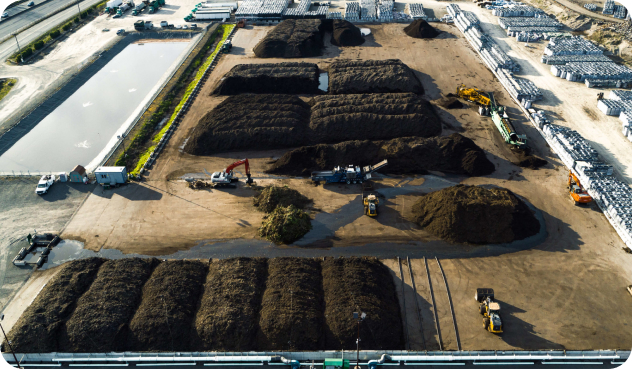
Static Pile Pros
- Minimal investment.
- Minimize odor concerns.
- Good for wetter compost vs. other methods.
- Composts large quantities of waste in a smaller footprint.
- Easy to maintain.
- Faster results (with some caveats).
Static Pile Cons
- Requires careful monitoring to ensure the pile does not dry out.
- Blowers require electricity, which can increase costs.
- Relies on other materials, like finished compost or mulch.
- Not always an efficient use of space.
- Animal waste and manure extend the timeline and could take up to a year to process.
5. Anaerobic Digestion
Anaerobic digestion is the decomposition of biodegradable waste by microorganisms in the absence of oxygen. This process takes place in sealed, heated reactors, usually made of concrete or metal. The purpose of these reactors, or digesters, is to maintain optimal conditions for the necessary microbial activity, resulting in the production of biogas and digestate, the latter of which can be used as a soil amendment.
Under home composting conditions, anaerobic digestion could take up to a year to produce digestate fit for use in gardening. In industrial applications, in-vessel anaerobic digesters, sometimes also referred to as batch digesters, can produce digestate for further composting in as little as a month.
Anaerobic Digestion Pros
- The process generates biogas, which can be used for electricity, heating, or vehicle fuel.
- Digestate retains plant-essential nutrients and can be used as fertilizer, supporting a circular economy.
- It can process a wide range of organic wastes, including food waste, manure, and some industrial byproducts.
- The process reduces overall greenhouse gas emissions.
Anaerobic Digestion Cons
- The construction of digesters, automation, and process control systems in industrial settings requires significant initial investment.
- Feedstock needs effective pre-sorting to remove contaminants like plastics, metals, and other non-biodegradable materials.
- Some woody products are unsuitable for anaerobic digestion.
- Digestate must be further processed to be usable for fertilization.
6. Insect Processing
Insect processing, also known as insect-based organic waste management (IBOWM), uses insects to rapidly break down organic waste like food scraps and agricultural byproducts. Unlike vermicomposting, insect processing largely uses the larvae of black soldier flies in controlled environments. The larvae consume the biowaste and convert it to two main products: protein-rich insect biomass and frass (insect manure).
The insect biomass can be used as animal feed, pet food, and, in some regions, food for human consumption. Frass, the residue left after the larvae digest the biowaste, is a nutrient-rich organic fertilizer. Insect processing is highly scalable and can be integrated into existing waste management systems in both rural and urban settings.
Insect Processing Pros
- Insect processing can reduce large volumes of organic waste in days, much faster than traditional composting.
- It produces high-value byproducts (larval biomass and frass) with strong market demand.
- The process requires less land and water than other composting or livestock systems, compatible with urban environments.
- Frass enhances soil fertility and microbial diversity.
Insect Processing Cons
- There are strict regulations on the use of insect-derived products in food or animal feed.
- There are several consumer and stakeholder misconceptions about insect-based waste processing and products.
- Feedstock is sensitive to contaminants like plastic, metal, or chemicals.
- Operational complexity exists in infrastructure, controlled environments, and skilled management for insect farming and waste conversion.
Which Industrial Composting Method Is Best for Bioplastics?
Bioplastics require high temperatures to break down and are processed only at industrial composting facilities. Thus, any of the above methods will work. It’s imperative to double check with your communities waste management systems if there are composting sites available or if everything is headed to landfills. It should be noted, however, that bioplastics are not suitable for backyard composting systems. Without proper disposal, bioplastics could infect waste streams and take decades to break down entirely. Compostable plastics are not intended to end up in a landfill.
How to Find an Industrial Composting Facility Near You
In many areas, individuals and businesses can rely on their state or local government to process organic waste. Review your local government’s website to see if it offers composting services in your area. If there is no program in your city, you can find a private company to collect your organic waste. Visit the U.S. Composting Council website to see if there are compost centers near you. This national trade organization brings together customers and compost manufacturers across the country to help create healthy soil.
Learn More About Greenprint
Greenprint offers eco-friendly packaging solutions to the foodservice industry. Many of our products are home-compostable or will decompose at a commercial composting facility. Browse our collection of cups, clamshells, straws, and other products, or contact us online to find out more about our biodegradable products.
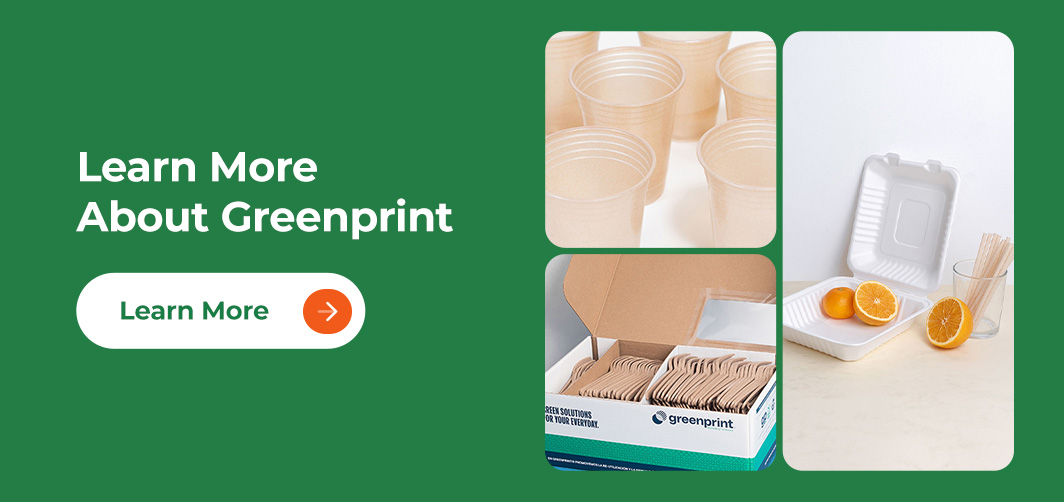
References
- https://ilsr.org/articles/compost-impacts-infographic/
- https://www.fao.org/soils-2015/news/news-detail/en/c/277682/
- https://www.feedingamerica.org/hunger-in-america
- https://www.scarabmfg.com/what-are-compost-windrow-turners-and-how-can-they-help-you/
- https://www.sciencedirect.com/topics/agricultural-and-biological-sciences/windrow-composting
- https://www.planetnatural.com/composting-101/compost-digesters/anaerobic/
- https://composting.ces.ncsu.edu/vermicomposting-2/
- https://composting.ces.ncsu.edu/vermicomposting-2/earthworms-and-worm-bins/
- https://www.epa.gov/sustainable-management-food/types-composting-and-understanding-process#invessel
- https://composthq.com/composting/aerated-static-pile-composting-explained/#What_Can_Be_Composted_with_ASP_Systems
- https://doi.org/10.2478/agriceng-2023-0013
- https://doi.org/10.3389/frsus.2025.1620925
- https://www.colorado.edu/ecenter/2021/03/10/bioplastics-are-they-good-they-seem
- https://www.compostingcouncil.org/?



